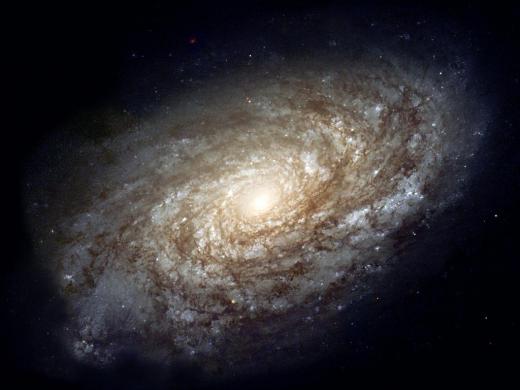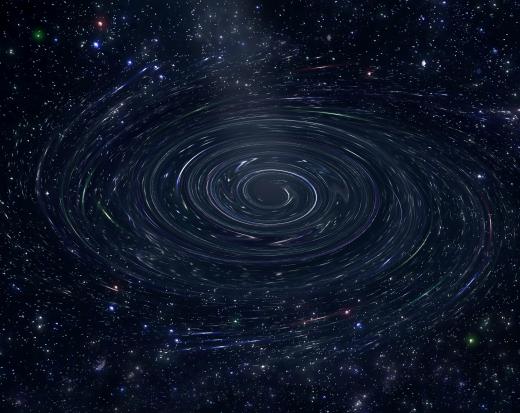What is a Spiral Galaxy?
 Mary McMahon
Mary McMahon
A spiral galaxy is one of three types of galaxy cataloged by Edwin Hubble. These galaxies appear to be the most abundant in the universe, and as implied by their name, they have a distinctive spiral shape, with arms wrapping around a very dense core. Our home galaxy, the Milky Way, is an example of a spiral galaxy. Estimates of the percentage of galaxies which take on this shape vary considerably, but most are above 50%.
Several features distinguish a spiral galaxy from other types of galaxies. The first is the galactic core, which consists of a bulge of very old stars arranged around a supermassive black hole. When a spiral galaxy is viewed from the side, the distinctive bulge is very obvious. The core is surrounded by arms which can wrap tightly or loosely, depending on a number of factors. These arms have much younger stars than the galactic core.

Spiral galaxies are surrounded by a halo of older stars, most of which are arranged in extremely dense groups known as globular clusters. These clusters can sometimes be hard to identify because the stars are so densely packed that they may look like a single point. Throughout the galaxy, gas and dust abound. The precise shape and size of a spiral galaxy can be influenced by the presence of neighboring galaxies, and within the galaxy, there can be a great deal of variation. Some areas, for example, appear to be hostile to the formation of planets, while others are more friendly to planetary formation.

Many spiral galaxies take on a barred shape. In a barred spiral galaxy, instead of having a round core, the galaxy's core is actually bar-shaped, and when viewed from the side, the bulge strongly resembles a peanut. The Milky Way falls under this classification. Spiral galaxies are classified as Sa, Sb, or Sc depending on how tightly wrapped the arms are, with Sc spiral galaxies having the loosest configuration. Barred spirals are designated SBa, SBb, and SBc.

It can take time to learn which class a galaxy falls under. In part, identification is dependent on perspective, because when viewed from the side, the details of a galaxy's structure can be obscured, with the galaxy looking like a bright line of stars. Scientists are constantly finding new galaxies and learning more about the structures within individual galaxies as observation equipment improves and as they accrue more and more images of the universe.
AS FEATURED ON:
AS FEATURED ON:














Discuss this Article
Post your comments